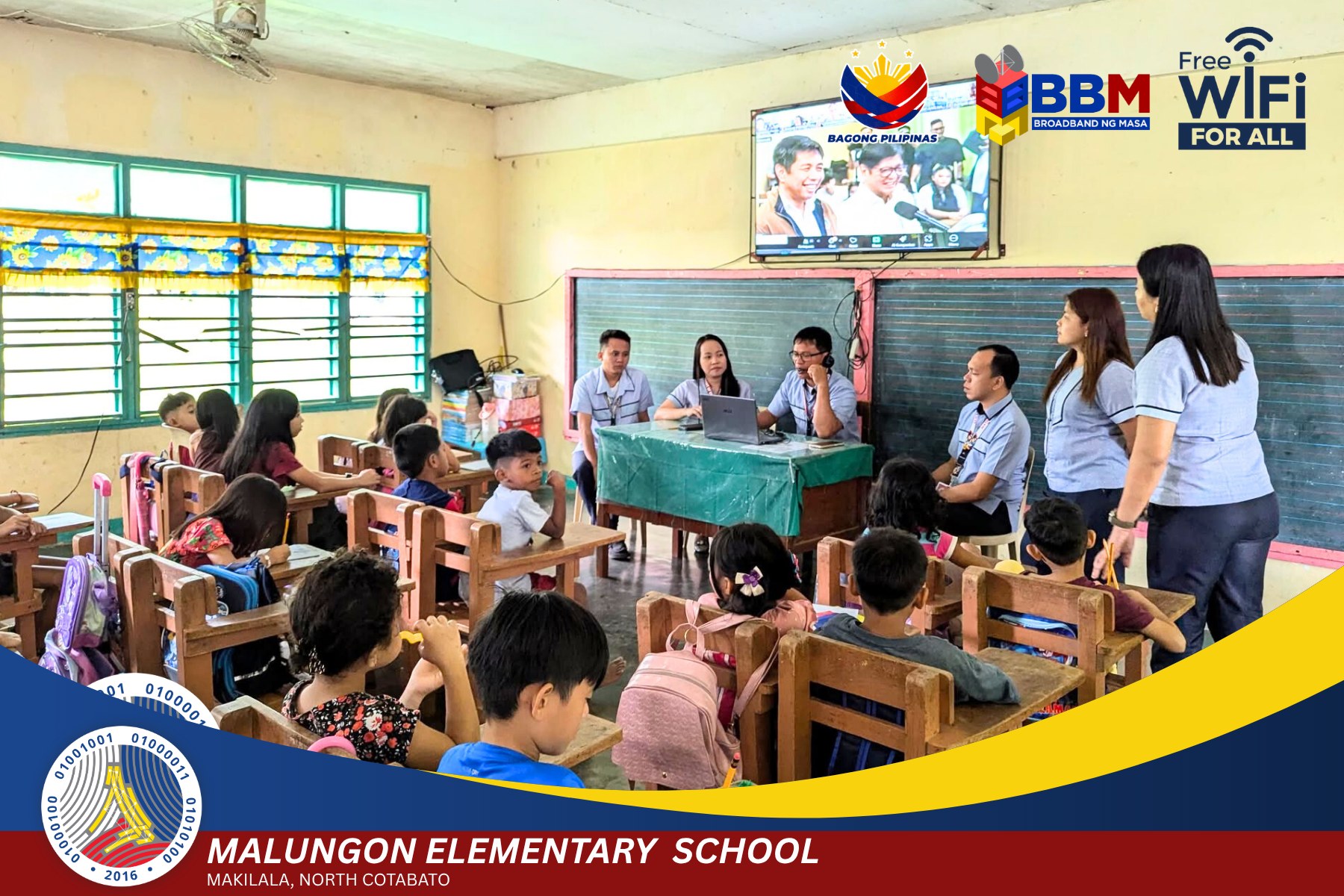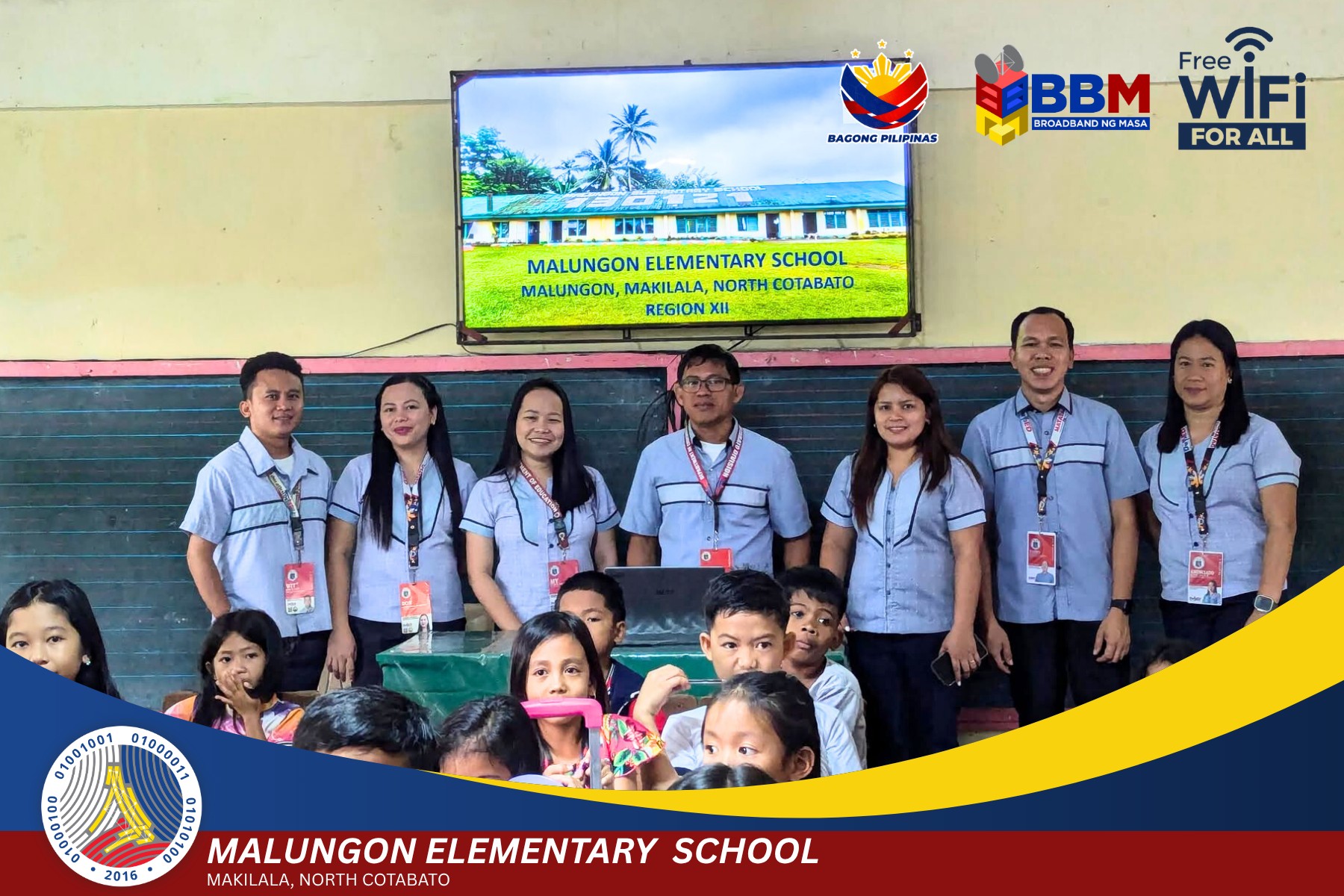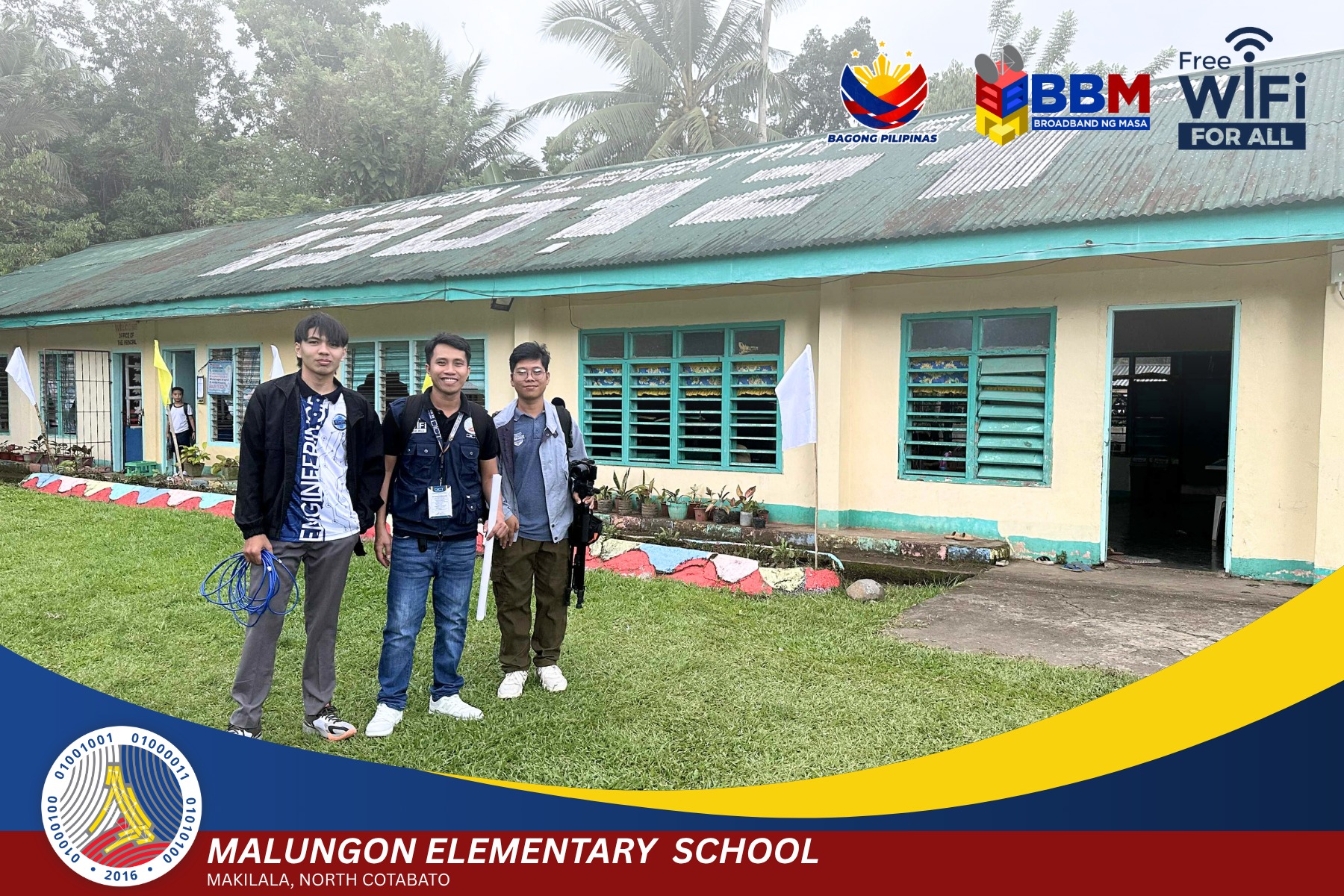
By Allen V. Estabillo | Philippine News Agency
What seemed impossible just months ago has now become routine: A video call from a school once virtually hidden in the mountains of Makilala, Cotabato province, reaching even the President and other top government officials.
No less than President Ferdinand R. Marcos Jr. himself spoke recently with teachers from Malungon Elementary School (MES)—one of the remotest school sites now connected online through the national government’s Free Wi-Fi for All Project.
For Head Teacher I Romel Sintos and his community, it was more than a call. It was proof that they were no longer isolated and invisible.
Straddled on a mountain plain over 600 meters above sea level in the southeastern boundary of Davao del Sur and Cotabato provinces, the farming community of Malungon, about 24 kilometers from the town center, is the farthest barangay (village) of Makilala.
The village, including MES, has long struggled with its remote location, particularly in terms of internet access. Teachers and residents must hike at least half a kilometer to a nearby hill to obtain a faint data signal, enabling them to send emails and access the latest educational content.
For years, this meant teaching with limited resources, outdated materials, and an uphill battle to comply with the Department of Education’s (DepEd) increasingly digital reporting requirements.
“It was really a struggle for everyone because the data signal was not even stable or reliable most of the time, and then we had to go to the town center just to get better internet access,” explained Sintos, with the travel to Makilala proper reaching almost an hour.

Digital transformation
But in March this year, a transformation began.
Thanks to the Free Wi-Fi for All Project of the Department of Information and Communications Technology (DICT), MES is now virtually connected, not just to the internet, but to the world.
MES was one of the schools situated in Geographically Isolated and Disadvantaged Areas (GIDAs) in the country that were provided with free internet access using satellite internet service Starlink through the DICT’s School Connectivity Drive.
Sintos said DICT installed a parabolic antenna in the school to capture a reliable and stable signal, providing almost the entire school grounds with open Wi-Fi.
DepEd also provided five laptops, enabling teachers to maximize the benefits of connectivity. The impact on learning has been very encouraging, with the learners, teachers, and even the community directly benefiting from it.
“Our teachers can now use updated resources, show videos on classroom TVs, and make learning more interactive,” Sintos said in an interview with the Philippine News Agency.
“We can now send our reports to the division, regional and the central offices without worrying about internet signal. The Wi-Fi-connected television sets installed in the six classrooms hosting the 120 Grade 1 to 6 learners have elevated teaching and learning at MES,” he added.
He said learners now regularly use the connection for assignments, research, and even simple digital literacy using cell phones and other gadgets.
What made this initiative even more impactful was its reach beyond the school.
Since MES leaves the Wi-Fi signal open and running throughout the day, Sintos said school visitors and other community members use it to connect with loved ones, access government services, and get updated with the latest information from the rest of the world.

Glimmer of hope
MES is no stranger to hardship. In November 2019, a powerful earthquake that hit parts of Mindanao then damaged three of its six classrooms and destroyed the school stage. The site was later declared a “no-build zone” by the Mines and Geosciences Bureau, though relocation is still pending.
Sintos said the damaged rooms continued to serve as temporary learning facilities, a testament to the school and community’s resilience.
While issues like school relocation and infrastructure repair remain unresolved, the digital breakthrough offers a glimmer of a better future.
“This is not just about learning, this is about our community getting better opportunities,” said Sintos, who hails from the village.
“With connectivity now bridging what once felt like insurmountable gaps, MES and the community of Malungon are no longer isolated—they are empowered,” he added. (PNA)
